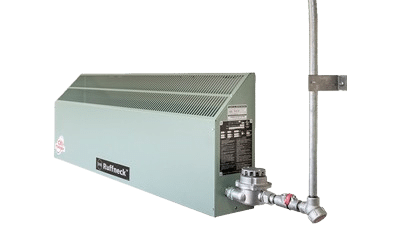Cooling Systems
We offer a full range of air conditioner and refrigeration options for your chemical storage building. Including a cooling option within one of our buildings allows for optimum temperature control while storing your flammables, combustibles, or other hazardous materials safely.
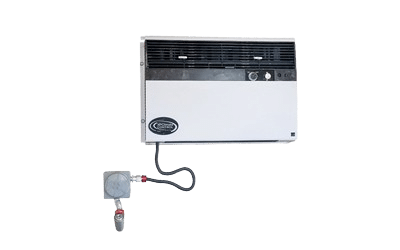
*Cooling System
Cooling Options for Your Storage Building
We offer a full range of air conditioner and refrigeration options for your chemical storage building. Including a cooling option within one of our buildings allows for optimum temperature control while storing your flammables, combustibles, or other hazardous materials safely. These temperature-controlled rooms save you time and money by using equipment that constantly maintains temperatures ranging from 60° to 70°F or colder. Our units help maintain the integrity of your expensive chemicals and hazardous materials over long periods of time.
We offer two types of air conditioners, each are available in regular and explosion-proof models:
- A standard AC will keep the interior about 20°F below outside temperatures.
- A higher capacity AC is available that can keep the interior as low as 65°F (+/- 5°F).
Refrigeration units are available for maintaining constant temperatures below 60°. If you have any questions about our cooling capabilities, feel free to Contact us using the easy question form at left.
Types of Cooling For Your Storage Building
Non-explosion Proof Air Conditioner
We supply two types of non-explosion proof air conditioner options. Our non-explosion proof air conditioners/heat pumps are interior commercial wall-mounted window units with a built-in thermostat. Also available are Bard brand exterior, through-the-wall commercial air conditioner(s) in various electric voltage to meet your company’s electrical supply demands for the chemical storage building. A remote thermostat is available for these models.
These units are hermetically sealed. Circuit breaker, wire and ground sizes are based on manufacturer recommendations, NEC and AHJ. Voltage size and phase are based on your company’s physical site electrical supply available.
Explosion Proof Air Conditioner
We also supply an explosion proof air conditioner. This is an industrial wall mounted window unit air conditioner with a built-in thermostat.
Refrigeration
Refrigerated chemical storage buildings are designed for chemicals that need to be stored between 35°F and 65°F and are available in both explosion proof and non-explosion proof classification. Explosion proof units have an evaporator/air handler conforming to NEC Class I, Division I or Division II requirements.
Features & Benefits
- Weather-resistant steel construction
- Chemical & UV resistant coating
- Can be manufactured to meet EPA, NFPA 30 and NFPA 1
- Continuously welded, leak-tested sump
- Walk-in or rack style available
- 15-year structural warranty
Common Applications
- Hazardous Waste Storage
- Flammable and Combustible Storage
- Paint and solvent Storage
Downloadable Information & Fact Sheets
- Drawing: 2-Hour Bi-Direction Fire Rated Building (FL6115)
- Design Your Explosive Storage Magazine
- Warranty on Building & Accessories
- Buy or Build Chemical Storage Brochure
- Infographic: Choosing a Chemical Storage Building
- FireLoc 1-page Sheet
Compliance & Approvals
At U.S. Chemical Storage we strive to give you the best solution for your operations. This building and its accompanying accessories can be engineered to meet the following approvals and certifications based upon your unique set of needs.
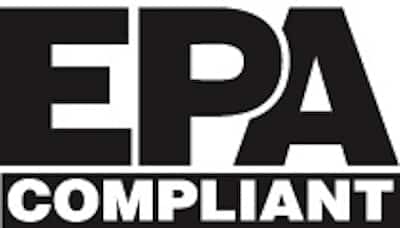
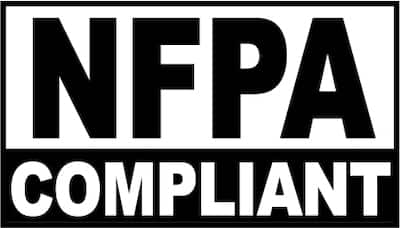


Frequently Asked Questions
First consult the Safety Data Sheet (SDS) to determine the type of chemical you’re storing and any storage requirements listed. There are two main classifications of buildings to consider: fire-rated and non-fire-rated steel buildings.
There are three main questions you should answer before engineering or design can begin on your building: what is to be stored, how much of it is being stored, and where is the location it will be stored? You will also need to consult with your local “Authority Having Jurisdiction” (AHJ) or local code expert to determine your area’s specific storage building requirements.
Our team at U.S. Chemical Storage has a wealth of knowledge, experience, and resources to help analyze your storage needs, but the final approval is made by the local AHJ, so you will need to ultimately ask them about your requirements early in the planning process.
The definition of a “sump” is a pit or reservoir providing containment for spilled liquids. U.S. Chemical Storage offers leak-proof spill containment sumps in each standard model. All our sumps are tested for leaks for a 24-hour period prior to finishing. The sump is then covered by a steel or fiberglass floor grating and can even be equipped with a resistant plastic sump liner to protect against corrosive chemical accidental spills. The size of the sump is dictated by code based on the volume of liquid being stored within the building.
Building size is determined by the amount of hazardous material you are planning to store, the need for occupancy or inspection around these materials, and must take into consideration the most efficient way of moving these materials into and out of your chemical storage building.
Location of the building can be either inside another building or outside to fit your needs. Fire Separation, which is the amount of fire rating required between two occupancies, or the separation distance between those two occupancies, is determined by the type of chemical or hazard being stored, and distances between buildings, egress pathways, or environmental features. To determine the required fire separation, it is best to consult with your local code authority. Inside another building or within 10 feet of another building, you’ll be required to have a 4-hour fire rating. If your hazmat storage building is located at distances 30 feet or greater your building may not be required to have a fire rating at all.
Request a Quote
Other Types of Climate Control Accessories
Heating Options for Your Storage Building
U.S. Chemical Storage offers a wide variety of heating options for your chemical storage building.
Exhaust Fan Options for Your Storage Building
There are many exhaust fan options available to complete your U.S. Chemical Storage building customization.
RELATED ARTICLES
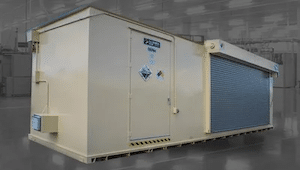
How To Store Lithium Batteries
Lithium batteries are often used in today’s electronic environments.
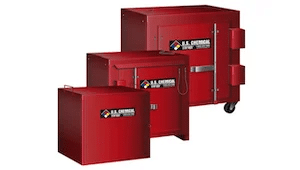
Explosive Storage Magazines
Prevent accidents by storing your high and low explosives properly.

Pharma Hazmat Storage
This manufacturing process needed a compliant 90 day storage solution.


